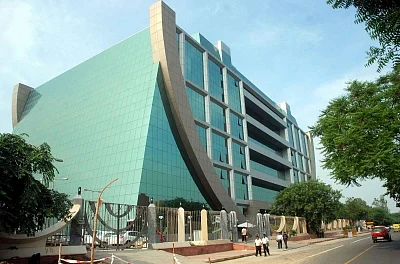By Anand Singh and Rajnish Kumar Singh
New Delhi, April 25 (IANS) Painstaking scientific investigations virtually starting from the scratch, including use of advanced DNA mapping and technical surveillance, and spread over nearly nine months in complete secrecy helped the CBI finally crack the sensational Kotkhai rape-murder case.
Narcoanalysis and polygraphy and technical data also helped the agency come to the conclusion that those accused by Himachal Pradesh Police in the rape-murder case of the 16-year-old girl in Shimla's Kotkhai area in 2017 were not the culprits, an official told IANS on Wednesday.
"When we took over the case, there were already six accused named by police," he said, adding that one of the accused had died in police custody.
The Class 10 student went missing on July 4 last year while returning from school, five km from her home. Two days later, her body was found in the Halaila forest area.
The Central Bureau of Investigation (CBI) took over the case on July 22, 2017, after the Himachal Pradesh High Court's orders.
"After taking over, we started collecting digital footprints of the accused named by Himachal Police," the official said.
The official said that the agency officials soon found that the accused had never visited the area where the crime occurred.
"We matched their blood samples with DNA found on the girl and from blood samples collected from the spot and other material like liquor bottles and the victim's clothes. All the results were again negative," he said.
"The CBI carried out four polygraphy and narcoanalysis tests on the accused which too were negative. Thus, we gave clean chit to them," he said.
The official said that the agency had to then start all over again from the scratch.
"We started investigation afresh, thoroughly combing the area. The agency questioned over 2,000 area people and recorded the statements of over 400 persons," he said.
The CBI official maintained that area residents didn't cooperate as the case had gained wide publicity. The CBI also didn't take police help as it had arrested nine police officers, including Inspector General of Police Zahur H. Zaidi, for the custodial death of one of the accused.
"However, the Central Forensic Science Laboratory (CFSL) team's help proved very important as it gave a lot of clues initially about the age group of the prepetrator. We collected blood samples of over 250 persons from the area around the crime spot but DNA tests did not provide any clue," he said.
The CBI also followed persons with criminal antecedents to Kashmir and Uttarakhand.
He said that when effort proved futile, the CFSL team suggested more advanced DNA analysis technique on 250 blood samples collected earlier on.
And in one case, the blood sample matched with the crime scene to a significant extent. It was of a family from Kangra district.
The CBI team visited the family's house and profiled its members and found that one of them was an accused in several criminal cases but was out on bail. He was also absconding since September 2016.
"More blood samples of the family members were drawn, which confirmed that we had identified the right suspect," the CBI official said.
The official said accused Anil Kumar alias Neelu -- who was finally arrested on April 13 -- was not in touch with his family and did not even keep a mobile phone.
The official said that Anil first contacted one of his probable contacts in August 2017, followed by in February 2018, early March, and early April by using mobile phones of others.
"The CBI identified the mobile owners, mapped their movements on call days and got the sketches of the suspect made with the help of mobile owners.
"In mid-April, he made another phone call, and a CBI team rushed immediately to a farm in Rohru area of Shimla and arrested on the basis of a sketch prepared earlier.
The official said that Anil Kumar had gone to the village only four days ago to work as a farm labourer.
He was brought to Delhi for questioning, and presented in the High Court on Wednesday.
The official said when the crime was committed, Anil Kumar was working only eight km away from the girl's house in Shimla district.
Anil Kumar was very clever as he never left any footprints -- digital or otherwise -- on his whereabouts, due to which the CBI kept its operation a total secret, he added.
He was very clever no doubt, but the CBI team outfoxed him -- of course, with the help of painstaking scientific investigations.
CBI Director Alok Kumar Verma expressed satisfaction over the work done by the team of CBI officials and forensic experts.
CBI Spokesperson Abhishek Dayal said: "The CBI Director was monitoring the case progress from day one." He said that over 40 CBI officials worked round the clock to crack the case.
(Anand Singh can be contacted at anand.s@ians.in and Rajnish Kumar Singh can be contacted at rajnish.k@ians.in)
--IANS
aks-rak/tsb
(This story was auto-published from a syndicated feed. No part of the story has been edited by The Quint.)
(At The Quint, we question everything. Play an active role in shaping our journalism by becoming a member today.)
